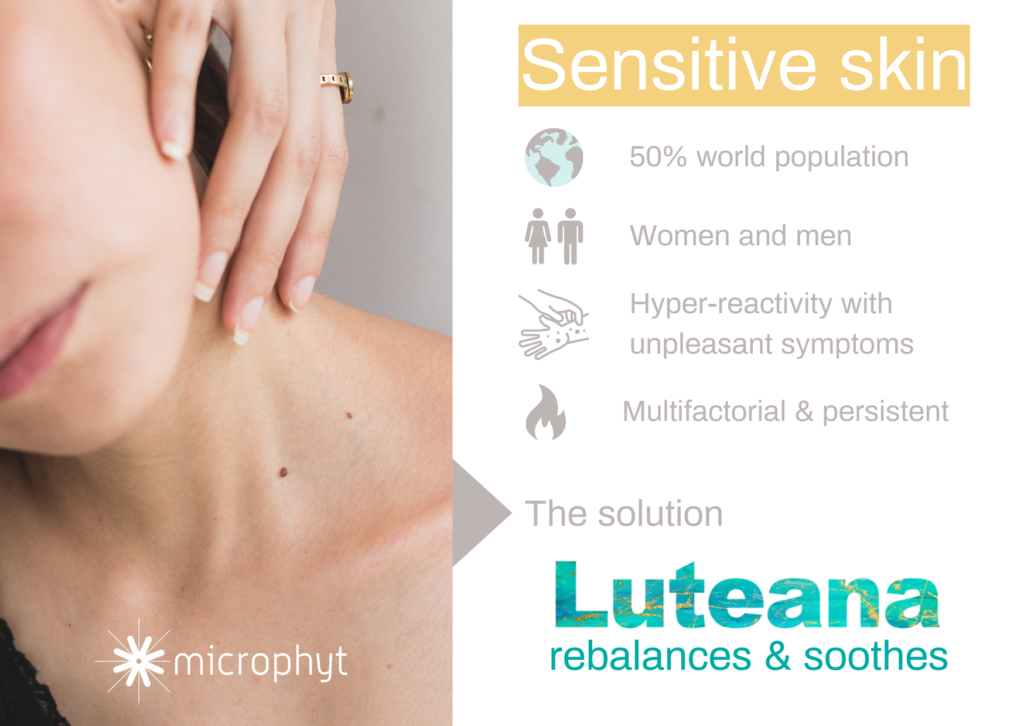

Harnessing biotechnology for sensitive skin
May 19, 2022

Sensitive skin is a complex condition with multiple causes and symptoms. It is thought to affect half of the world’s population and is a problem that needs to be taken seriously. But help is at hand – new solutions are available.
External and internal causes
The factors behind sensitive skin fall into two categories. First, there are exogenous triggers such as climatic conditions: cold, wind, dry air, exposure to UV rays and pollution as well as excessive use of soap, hand sanitiser and cleaning products can all increase the skin’s sensitivity.
Then there are variations in hormone levels caused by stress, menstrual cycles, psychological factors, etc., which can disrupt the skin’s balance.
Varied reactions
Sensitive skin is characterised by hyperreactivity – sometimes chronic – to a simple, minor or even non-existent stimulus.
It often leads to inflammatory reactions (erythema, sensations of heat or burning, etc.). A surge in plasma releases cells that induce an immune response and result in a vasodilation (widening) of small blood vessels known as capillaries. Mediators involved in this reaction include pro-inflammatory cytokines (IL-1β and TNF, for example), small proteins that need to be inhibited to calm inflammation.
Those with sensitive skin can also experience a prickly feeling, tightness or itching. This is generally caused by dry skin. Skin dehydration is indicated by abnormally high levels of transepidermal water loss (TEWL). In healthy skin, TEWL is generally 5g/m²/hour, but in sensitive or atopic skin it can reach 18g/m²/hour. This high level of dehydration can be attributed to a more porous skin barrier and also a reduced extracellular matrix. Restoring the skin involves restructuring the skin barrier and the extracellular matrix by adding more fibre (collagen and elastin).
Innovative solutions
Solutions to treat sensitive skin have developed to take into account the multiple causes behind the condition.
Treatments were initially based simply on hydration, repairing the skin barrier or anti-inflammatory action, but new solutions are now arriving on the market.
Recent studies have demonstrated the crucial interactions between cutaneous, immune and nerve cells in the skin. They form a network known as the neuro-immuno-cutaneous (NIC) system, which plays a central role in the imbalance in sensitive skin. This new finding did not go unnoticed by Microphyt, which responded by developing Luteana™, a cosmetic active ingredient based on microalgae. It rebalances the NIC system, restoring optimal conditions and providing lasting relief for sensitive skin by targeting the root cause of the imbalance. Luteana™ paves the way for a whole new generation of comprehensive solutions that are more effective than traditional temporary fixes.
Click here to find out more about Luteana™.





